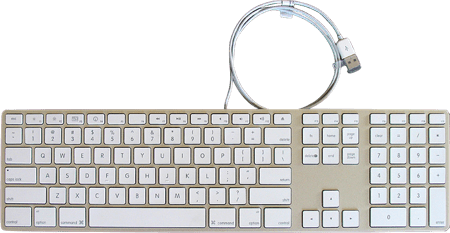
Today, one more Switcher has been the one who has asked us where the menus were on a Mac.
I know that for many of the readers this Post is going to be just to pass it by since it is something very obvious but we will also talk about keyboard shortcuts.
For the Switchers that come from Gnome there is no problem on the Mac because the concept of the Gnome desktop is a copy of Mac OS X but for those who come from Windows and nothing else than Windows the issue changes a lot.
The menus of all the applications that can run on a Mac are in the system bar, that is, at the top of the screen and outside the application window.
The keyboard shortcuts to change the application have changed a bit since it is no longer Alt + Tab but Command + Tab but as the command is located in the place of the Alt key on a PC we will not have a major problem; the problem comes when we want to switch between windows of the same application where instead of using Command + Tab we will have to use "Command +>" or "Command + <". This concept in the long run greatly increases the usability of the graphical interface but we recognize that at first it may seem like a mess.
Another way to switch between windows is with F9 on older keyboards or F3 on modern ones; The latter have an icon indicating this function, printed on the key. By pressing this function we see how all the application windows are reduced so that we can see everything on the screen and from here we can click on the one we need at a certain time. With F10 (old keyboards) we can see only the windows of the current application scattered, leaving the others in the background darkened.
Why doesn't the application close when I close a window?
Most applications (especially multi-windows) on Mac do not come out when closing the windows, this makes it much faster to reopen applications that we use regularly but if you want to exit the program forget about Alt + F4 typical in Windows or Control + F4 to close docked windows. Now you will use Command + Q to exit and Command + W to close current window.
Of course you can go to System Preferences / Keyboard and Mouse / Keyboard Shortcuts and remap the functions to other key combinations but the truth is that it is not difficult to get used to the new keys.
For Linux users: Those of you who are used to using Alt + F2 to request the execution of a program of which you know the name, you can use SpotLight using Command + Space, a box will appear at the top right where you type the name or part of the name and search immediately everything that has something to do with it; in Leopard the focus is automatically positioned on the most relevant option in the list so that just by hitting Enter the action is executed. If you want to spin even finer, we recommend the free application, QuickSilver.
In future publications we will continue to make small quick tips for switchers.
Add that if with the old keyboards the F10 allows us to see scattered only the windows of the current application, leaving the others in the background darkened.
In old keyboards we also had the F11 option to move the windows aside and reveal the desktop.
With the new keyboard these options are also available through the F3 keys and a couple of combinations:
cmd + F3 - move the windows aside and show the desktop
ctrl + F3 - scatters only the windows of the current application leaving the others in the background darkened